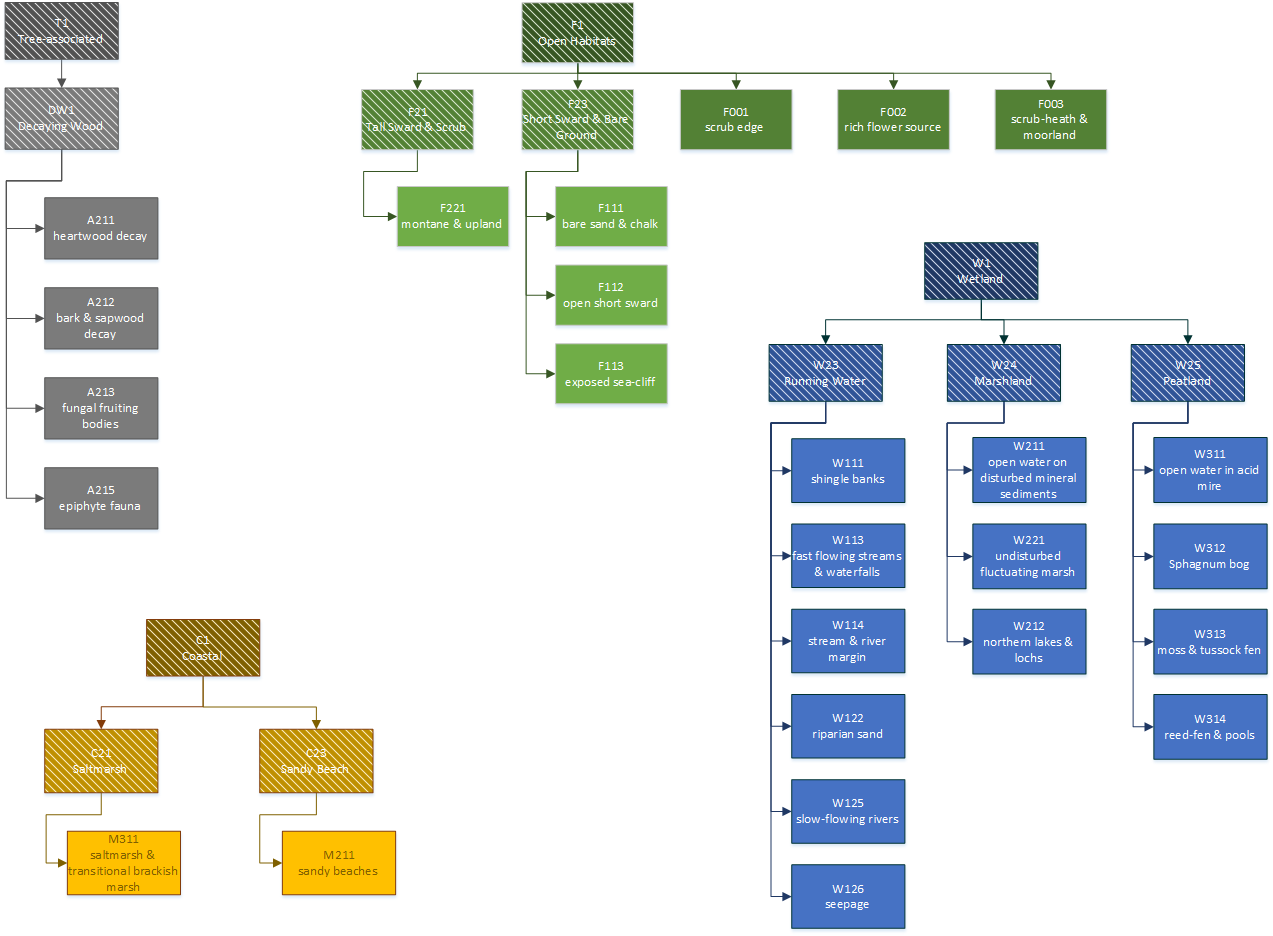ISIS (Invertebrate Species-habitat Information System) (Webb & Lott, 2006) is the predecessor to Pantheon. Although it was never formally released or published, it has attained widespread use for analysing and reporting on site quality for invertebrates.
ISIS was originally designed as an application for recognising invertebrate assemblage types in species lists collected at scales ranging from management compartment to landscape character area. The assemblage types were labelled in terms that relate to their favoured habitats in order to make them accessible to non-specialists. Two levels were recognised in the classification: broad assemblage types (BATs), a comprehensive series of assemblage types that were characterised by more widespread species; and specific assemblage types (SATs), characterised by ecologically restricted species and were generally only expressed in lists from sites with conservation value.
BATs have now been replaced with Habitats, which have the same function but include more species than the original BATs as:
- overall, more species are represented in Pantheon than in ISIS.
- some species now hold dual representation in more than one BAT.
There are also some additions to the habitats, including wet woodland, upland and brackish pools and ditches. The new naming protocol should be adopted (i.e. Habitat and not BAT).
SATs have been brought from ISIS into Pantheon. The Pantheon tables for SATs show whether or not any of the SATs represented in a sample are sufficiently species-rich to reach Favourable condition status - see Reported condition for more information on how this condition assessment is made.
Outputs for both Habitats and SATs include species with a conservation status, percentage representation, Species Qaulity Indices (SQI) and easy access to the underlying species lists. The SQI has been updated to be in line with new reviews. An explanation of the new scoring systems can be found on the Scoring systems page.
The diagram below shows the hierarchy of the SATs within Habitats and resources. The hashed boxes represent the habitats and broad biotopes within Pantheon.

